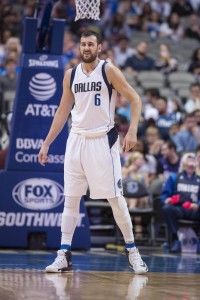Before the Knicks traded Carmelo Anthony to the Thunder, the Cavaliers were another potential suitor for his services. New York wanted Cleveland center Tristan Thompson in a deal for Anthony but the Cavaliers rejected that offer, according to Joe Vardon of Cleveland.com.
The Knicks wanted cost-friendly, young, and productive assets in exchange for Anthony. Thompson, 26, is under contract for three seasons but will make a hefty salary, starting with $16.4MM in 2017/18. Vardon reports that Cleveland was willing to part with other sizeable contracts on the roster — primarily Iman Shumpert and his $11MM salary — but no deal was reached.
New York still acquired a young, controllable center for Anthony as Enes Kanter came to New York in the deal. Kanter will take in nearly $20.6MM this upcoming season and holds an $18.6MM player option for 2018/19.
Read more news from the Central Division:
- In his latest mailbag, Vardon answered several questions about the Cavaliers ahead of training camp. Vardon believes it is possible that the team trades Brooklyn’s 2018 first-round pick (acquired in the Kyrie Irving trade) for an elite talent.
- Zach LaVine, who was acquired from the Timberwolves in the Jimmy Butler deal, is coming off a serious injury as he prepares for his first season in Chicago. However, former Bulls head coach and current Timberwolves head coach Tom Thibodeau feels that LaVine, still just 22 years old, has tremendous upside, Joe Cowley of the Chicago Sun-Times writes.
- During a recent podcast, Cowley spoke about what the hiring of Doug Collins as a senior adviser for the Bulls means for the team.
- NBA.com’s Sam Smith previews the Bulls’ 2017/18 season by examining how the team’s mostly young core will develop.
- NBA.com’s Keith Langlois looks at several storylines entering the Pistons‘ season. Among those storylines include Avery Bradley adjusting to Detroit, Luke Kennard‘s first impressions, and Reggie Jackson returning to form.
